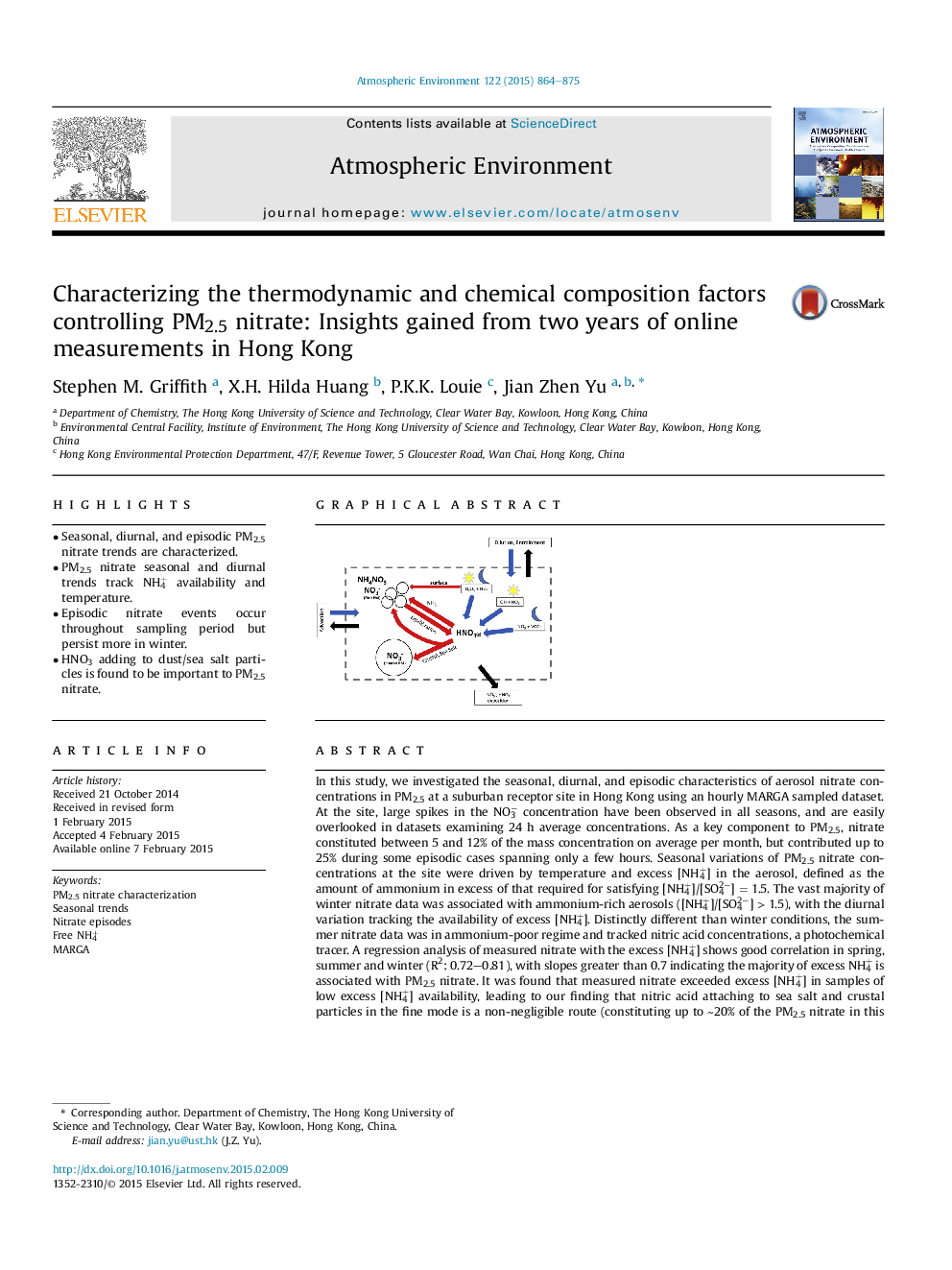| Article ID | Journal | Published Year | Pages | File Type |
|---|---|---|---|---|
| 6337138 | Atmospheric Environment | 2015 | 12 Pages |
â¢Seasonal, diurnal, and episodic PM2.5 nitrate trends are characterized.â¢PM2.5 nitrate seasonal and diurnal trends track NH4+ availability and temperature.â¢Episodic nitrate events occur throughout sampling period but persist more in winter.â¢HNO3 adding to dust/sea salt particles is found to be important to PM2.5 nitrate.
In this study, we investigated the seasonal, diurnal, and episodic characteristics of aerosol nitrate concentrations in PM2.5 at a suburban receptor site in Hong Kong using an hourly MARGA sampled dataset. At the site, large spikes in the NO3â concentration have been observed in all seasons, and are easily overlooked in datasets examining 24 h average concentrations. As a key component to PM2.5, nitrate constituted between 5 and 12% of the mass concentration on average per month, but contributed up to 25% during some episodic cases spanning only a few hours. Seasonal variations of PM2.5 nitrate concentrations at the site were driven by temperature and excess [NH4+] in the aerosol, defined as the amount of ammonium in excess of that required for satisfying [NH4+]/[SO42â] = 1.5. The vast majority of winter nitrate data was associated with ammonium-rich aerosols ([NH4+]/[SO42â] > 1.5), with the diurnal variation tracking the availability of excess [NH4+]. Distinctly different than winter conditions, the summer nitrate data was in ammonium-poor regime and tracked nitric acid concentrations, a photochemical tracer. A regression analysis of measured nitrate with the excess [NH4+] shows good correlation in spring, summer and winter (R2: 0.72-0.81), with slopes greater than 0.7 indicating the majority of excess NH4+ is associated with PM2.5 nitrate. It was found that measured nitrate exceeded excess [NH4+] in samples of low excess [NH4+] availability, leading to our finding that nitric acid attaching to sea salt and crustal particles in the fine mode is a non-negligible route (constituting up to â¼20% of the PM2.5 nitrate in this study) to assimilate nitrate into the PM2.5 aerosol. Accounting for both this minor route and the ammonia + nitric acid route may prove useful in modeling efforts to capture PM2.5 nitrate measurement fluctuations, particularly during events of a large influx of alkali particles, such as dust storms.
Graphical abstractDownload high-res image (138KB)Download full-size image
